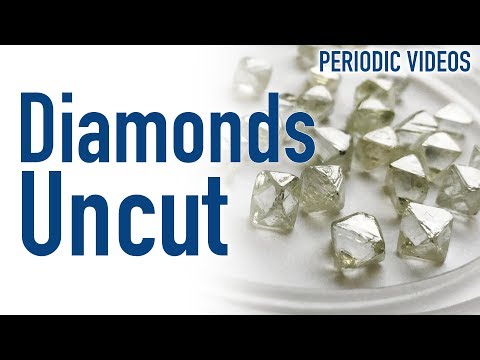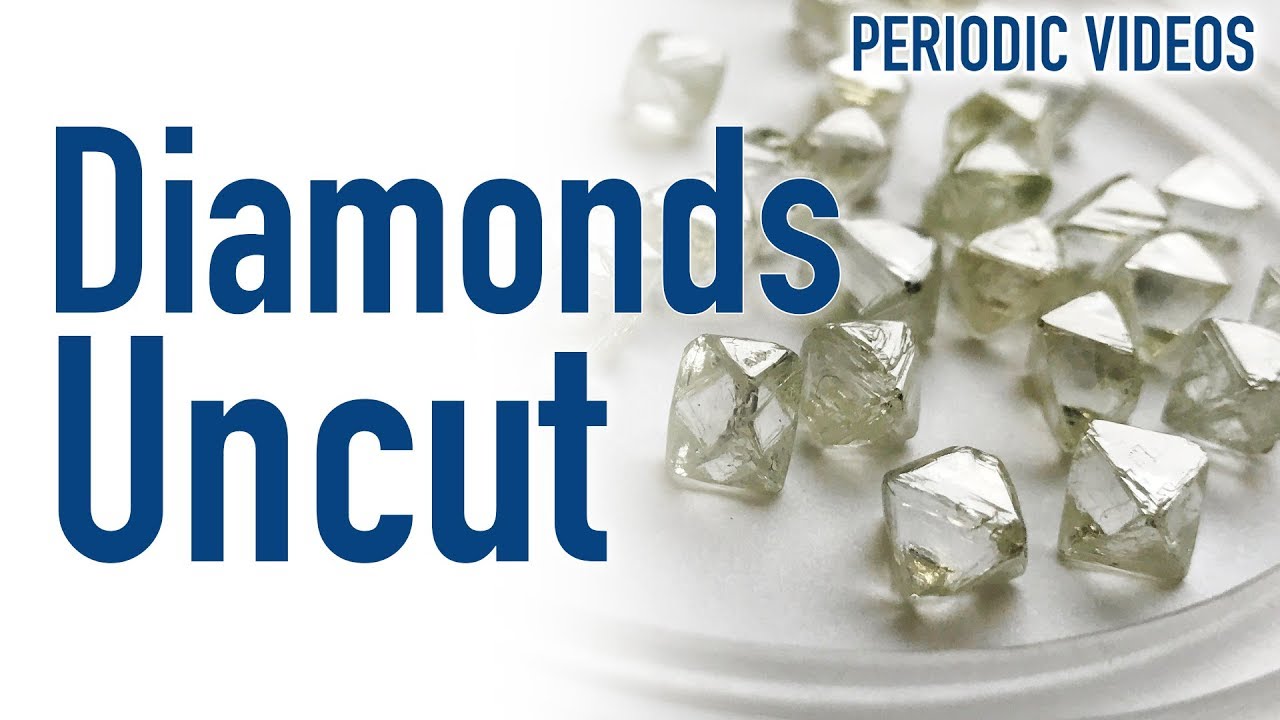Uncut diamonds are a mesmerizing sight to behold. These rough, unpolished gems are nature’s raw masterpiece, brimming with untapped potential and hidden beauty. Unlike their polished counterparts, uncut diamonds have an alluring mystique, as they showcase their natural formation and unique characteristics. With their untouched facets, sparkling imperfections, and unrefined edges, uncut diamonds possess an enchanting charm that captivates the imagination. Each uncut diamond is like a hidden treasure, waiting to be discovered and transformed into a stunning work of art. The rawness of these diamonds evokes a sense of wonder, as we ponder the intricate journey they have undergone deep within the Earth’s crust. Their untouched form allows us to witness the raw power of nature and appreciate its magnificent creations. Every uncut diamond holds a story, a tale of time and pressure that has shaped it into a one-of-a-kind masterpiece. The allure of uncut diamonds lies in their unadulterated beauty and the promise of what they can become with the skilled hands of a master cutter. Discover the world of uncut diamonds and embark on a journey of awe and fascination as you delve into their untamed splendor.

Uncut Diamonds: A Closer Look
| Aspect | Description |
|---|---|
| Shape | Uncut diamonds typically have an irregular shape, resembling a pebble or a rock. Their natural form is far from the elegant and symmetrical appearance we associate with polished diamonds. |
| Color | Uncut diamonds exhibit a range of colors, varying from colorless to pale yellow or even brown. These hues are caused by impurities and trace elements present during their formation. |
| Surface | The surface of an uncut diamond may appear rough and textured, often showcasing a layer of dirt or mineral deposits acquired during its journey from the Earth’s depths to the surface. |
| Transparency | While some uncut diamonds may possess a certain degree of transparency, most tend to be opaque or translucent due to the presence of internal flaws or inclusions. These inclusions can be minerals, fractures, or other diamond crystals trapped within. |
| Size | Uncut diamonds can vary significantly in size, ranging from a few millimeters to several centimeters in diameter. The size of an uncut diamond is often a primary factor influencing its value. |
| Texture | When touched, uncut diamonds may feel gritty or rough due to their natural state. This texture is a result of the diamond’s crystal structure, which is yet to be shaped and polished. |
| Weight | Uncut diamonds are typically measured in carats, with one carat equaling 200 milligrams. The weight of an uncut diamond can vary greatly and is an important factor in determining its value. |
“Raw Brilliance: Unveiling the Untouched Beauty of Diamonds”
What Do Uncut Diamonds Look Like?
Uncut diamonds, also known as rough diamonds, are natural gemstones that have not yet been shaped or polished. Unlike the sparkling diamonds we commonly see in jewelry, uncut diamonds have a more raw and unrefined appearance. In this article, we will explore the characteristics and visual aspects of uncut diamonds.
1. Formation and Structure
Uncut diamonds are formed deep within the Earth’s mantle, under immense heat and pressure. Over millions of years, carbon atoms arrange themselves into a crystal lattice structure, creating a diamond. This process results in a variety of shapes, sizes, and qualities.
When uncut diamonds are extracted from the Earth, they often have a rough, irregular shape. Their outer surface is typically covered in a layer of rough skin, known as diamond skin, which can be yellowish, brownish, or grayish in color.
2. Natural Colors
Uncut diamonds come in various natural colors, including white, yellow, brown, and even rare hues like blue, green, and pink. The color of a rough diamond is influenced by impurities or structural defects present within the crystal lattice. For instance, the presence of nitrogen can cause a yellowish tint, while boron can give a blue coloration.
It’s worth noting that the majority of uncut diamonds are not colorless like their polished counterparts. Instead, they exhibit a wide range of hues, often with a cloudy or opaque appearance.
3. Transparency and Clarity
Uncut diamonds are generally not transparent like cut diamonds. Instead, they have varying degrees of transparency and clarity. Some rough diamonds may have internal inclusions or imperfections, known as birthmarks, which can affect their overall appearance and value.
These birthmarks can be in the form of cracks, fractures, or other mineral inclusions. However, the presence of birthmarks does not necessarily make the diamond less valuable, as it can add uniqueness and character to the gemstone.
4. Shape and Size
Uncut diamonds can come in a variety of shapes, depending on how they were naturally formed. Common shapes include octahedron, dodecahedron, and cuboid. Some rough diamonds may exhibit more complex shapes or irregular formations.
Regarding size, uncut diamonds can range from small crystals to larger stones weighing several carats. The size of a rough diamond is often a significant factor in determining its value and potential for cutting into a polished gem.
5. Surface Texture
The surface texture of uncut diamonds is generally rough and unpolished. The diamond skin mentioned earlier gives the stone a textured appearance. Additionally, the outer surface may have natural etchings, indentations, or irregularities caused by the diamond’s journey through the Earth’s crust.
These surface features can add character to the rough diamond, making each stone unique. However, during the cutting and polishing process, the surface texture is carefully removed to reveal the diamond’s brilliance and sparkle.
Conclusion
Uncut diamonds possess a distinct beauty that sets them apart from their polished counterparts. Their natural colors, irregular shapes, varying transparency and clarity, and unique surface textures make them fascinating gemstones. While uncut diamonds may not have the same immediate allure as their polished counterparts, they hold immense potential and value, awaiting the skilled hands of gem cutters to unleash their true brilliance.
What do uncut diamonds look like?
- Uncut diamonds have a rough, unpolished appearance.
- They generally have a dull or matte surface.
- Uncut diamonds can come in various shapes, such as octahedron, dodecahedron, and cube.
- They often have a cloudy or milky appearance due to internal impurities.
- Uncut diamonds may have visible inclusions or blemishes.
- They can range in color from clear or white to yellow, brown, or even gray.
- Uncut diamonds usually have a natural, organic shape rather than a symmetrical cut.
- They may have a natural outer crust or layer of diamond rough called the skin.
- Uncut diamonds are typically larger in size compared to their cut and polished counterparts.
- They have a raw, natural beauty that can be enhanced through cutting and polishing.

